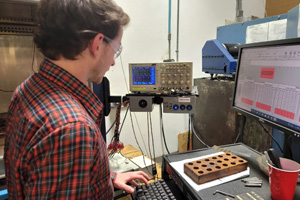- info@motionsensors.com
- Monday - Thursday: 8AM to 5PM EST
- 252-331-2080
Areas of Speed Sensor Customization
Common Areas of Customization
Speed Sensor customization can fall into many categories. Over the years, we have designed thousands of different sensors, reflecting the wide variety of customer and application requirements that exist. Our experience ranges from the use of custom connectors to designs where we start from scratch to develop a sensor that meets customer requirements. Many changes are straightforward modifications and do not require a large amount of custom engineering design. For more information please see the Standard Speed Sensor Modification section below.
The majority of our customization work falls into two primary categories: physical shape/size and functional output requirements. Most custom designs are a blend of both categories.
Physical Shape/Size
While many changes to sensor shape/size are what we would consider a standard sensor modification – for example the increase of a thread length from 1.875” to 3.5” – other changes can impact the internal geometry, functional capabilities, and assembly considerations of a speed sensor, thereby necessitating more extensive design work. Definition of the desired sensor envelope size and shape is an important part of the sensor design process and in many cases can have extensive impact upon sensor design options. Motion Sensors has designed custom sensors ranging in size from .250” in diameter to 1.25” in diameter, with a wide variety of body styles, flanges, mounting threads and lengths.
Connection details such as special cable, heat shrink, over-molding and the use of conduit or hose are also common in many applications, as well as the use of special connectors such as QPL rated MIL series options.
Functional Output
Many of our custom sensors are designed to meet specific functional criteria determined by the application and the electronic interface requirements. For standard variable reluctance sensors this typically involves the minimum signal strength required by the electronics, which impacts the sensor resistance, inductance and gauss strength criteria. When dealing with electronics, customization requirements vary significantly. Some examples include specific types of sensor output (e.g. dual differential output), increase in frequency range or input power range, incorporation of protection for extreme environmental conditions (e.g. EMI interference and/or load dump) and decreased power consumption for battery operated applications.
Our engineering team has significant experience working with customers to develop custom speed sensors. Please contact us at 252-331-2080 or eng@motionsensors.com to discuss your requirements. Regardless of the stage of your project, we are able to offer technical input and guidance, budgetary pricing and estimates on NRE (where applicable). Our experience includes working with customers to define the initial product requirements, design activities including validation and qualification testing, as well as working with certification agencies where applicable to achieve product approvals.
